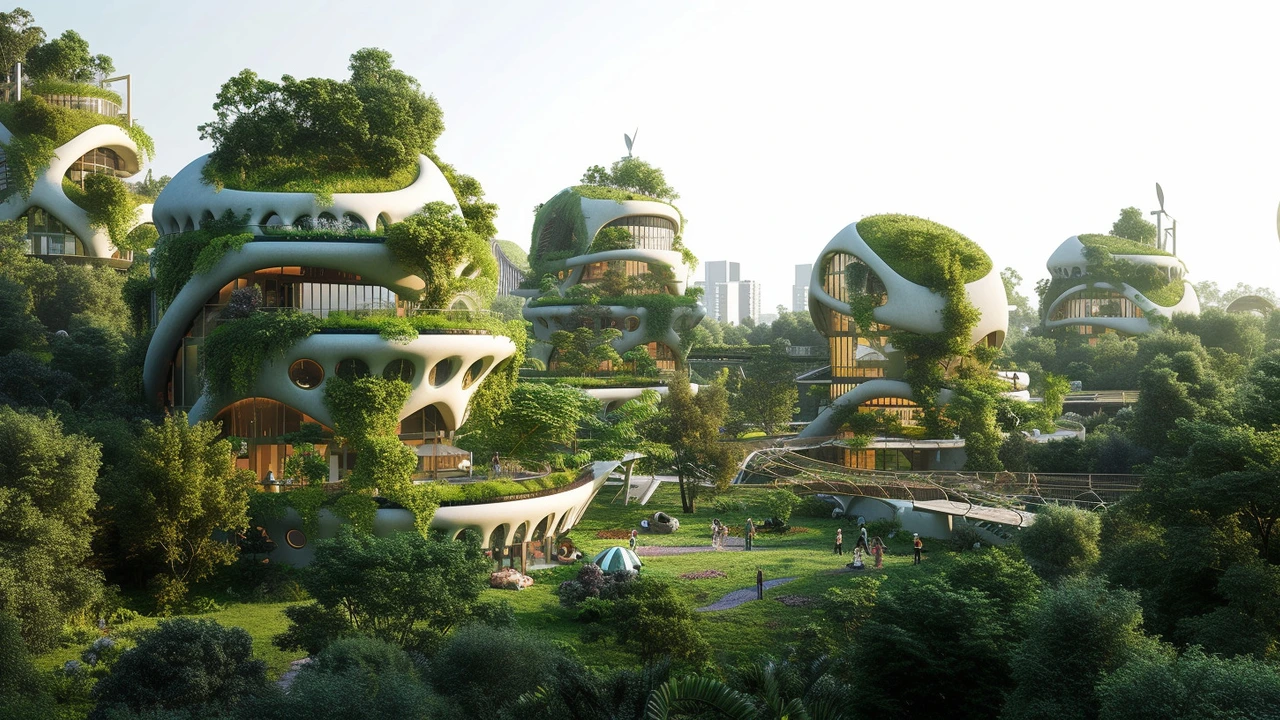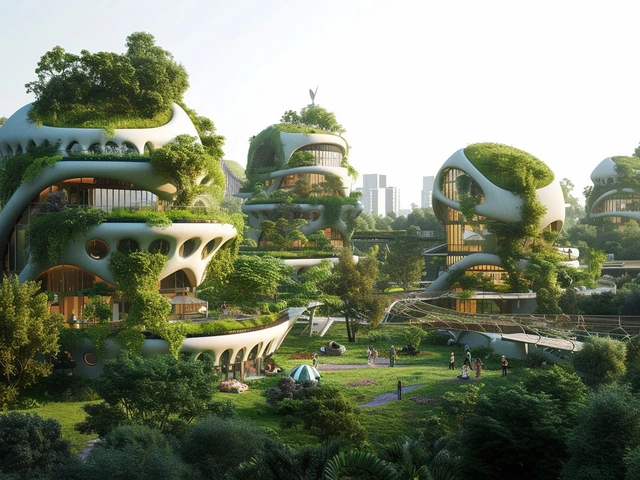Starting Right at the Bedrock: Sustainable Architecture
Now, I don't know about y'all, but being a blogger, I’ve had a relatively firm grip on green issues for quite some time. And quite recently, the buzzword that's hooked me for good is "sustainable architecture". We see towering structures and undulating edifices, but have you ever paused to mull over the energy consumption that sustains them? Or, before that, the resources expended to bring them about? As impressive as these constructions can be, they're rather notorious for being big bad wolves to Mother Earth, in more ways than one.
Now, ain't that a kick in the teeth? However, sustainable architecture, fittingly coined as eco-friendly design, aims to reduce these negative impacts. Sustainable architecture embodies the consideration of every environmental impact that the building could potentially stir up, starting from the materials used, the construction process, and even its operation once it's erected. So, ladies and gentlemen, let's dive headfirst into the labyrinthine corridors of sustainable architecture, shall we?
Sustainable Materials and Energy Efficiency: The Building Blocks
Every tale of outstanding heroism begins somewhere not-so-glamorous, right? Here, sustainability makes its appearance in our little architectural drama in the form of building materials. More often than not, these materials are derived from recycled or renewable resources. They're conservative, environmentally-friendly, and essentially harmonize with nature on a level that defies comprehension. For instance, consider bamboo. Bamboo is a durable, lightweight, renewable source of construction material that has been used for ages in diverse cultures. How 'bout that for an interesting fact, huh?
Then, we come to energy efficiency. Imagine if Goldilocks, instead of choosing between too big and too small, were to select from a range of too hot, too cold, and just right, it would give you a good idea of the energy efficiency that sustainable architecture aspires to achieve. The "just right" temperature is maintained with the aid of well-planned natural ventilation, thermal insulation, and solar power usage. Ingenious, don't you think? These days we're all clamouring about leaving less of a carbon footprint. Well, this much I can guarantee, becoming energy efficient is one giant leap in that direction.
Conserving Water – The Liquid Gold
Alright, granted, these buildings aren't yet producing streams of water from thin air (or are they? I don’t know!), but what they ARE doing is employing a top-notch water conservation approach. It's achieved through practical fixtures like low-flow and dual-flush toilets, rainwater harvesting systems, greywater recycling systems, and so on. These nifty techniques go a long way in being considerate of our globe's water treasure.
It all brings to mind a time when my wife, the ever-resourceful Lydia, came up with a homemade rainwater harvesting system for our garden. The look of pride on her face when she showed me the miraculous apparatus, a slapdash assembly of pipes and barrels, was priceless. If only on a larger scale, every building adopted such systems, just think of the water we could save.
Location, Location, Location
Now listen, we need to chat about the importance of location when it comes to sustainable architecture. For instance, take a patch of wetland or wildlife habitat, plonk a building on it, and hey presto! An ecological disaster zone is born. Conversely, an opportunely positioned structure can avail itself of natural sunlight, wind and other resources, reducing the need for additional energy inputs. Isn't that fascinating?
Eco-based Design: This Way Forward
As is the case with all things green, even sustainable architecture has a blueprint – Eco-design. Eco-design comprises the enlightened consciousness of minimizing waste, avoiding pollution, and preserving resources while still making green building structures. Oh, and while it’s at it, it also packs functionality, usability, behaviour, aesthetics, and cultural significance into the mix. Talk about a hard day’s job!
But jokes aside, dear reader, eco-design has the chutzpah to shape our future into a greener one, significantly influencing economic, social, and environmental resilience. It's like the golden ticket to a sustainable world. After all, who doesn't wish to leave a better world for the coming generations?
Green Roofing: More than Just a Pretty Cover
Have you ever noticed a few buildings with what looks like a piece of the Garden of Eden going riot on their roofs? No, it's not a landscaping project gone haywire. It's actually green roofing, a revolutionary aspect of sustainable building design. Not only does it provide a dose of aesthetic appeal, but green roofs also contribute to temperature moderation, stormwater management, and enhancing biodiversity. That's a whole lot of good for your buck.
Moreover, a building with green roofing sends a clear message to its surroundings – it cares about the environment, and it's doing something about it. It's the crème de la crème of eco-consciousness, oozing oodles of positivity into our efforts to step softly on our blue and green globe.
Sustainable Landscaping: The Green Boutique
Next up on our sustainability runway, we’ve got the guys with the green thumb – landscape architects! More than just making the world a prettier place, these folks use indigenous plants, minimising water usage, and retaining stormwater on-site to make an impressive impact on local ecosystems. By doing this, they help transform hard, grey urban spaces into flourishing, vibrant eco-spots. Talk about playing your part!
Wrapping Up: Hope Ahead
In conclusion, sustainable architecture, more than being a cool, trendy concept, is indeed the path forward for our generation and those to come. Importantly, it stands as a resounding affirmation of our commitment to the planet. Just imagine, dear reader, a future where green buildings sprout on every corner, beautiful in their aesthetic appeal, while silently combating our climate crisis. Now, wouldn't that be something? Ney, it won't just be something; it would be everything. So, let's stand shoulder to shoulder and dare to imagine a ‘Green Future’, one sustainable brick at a time.




